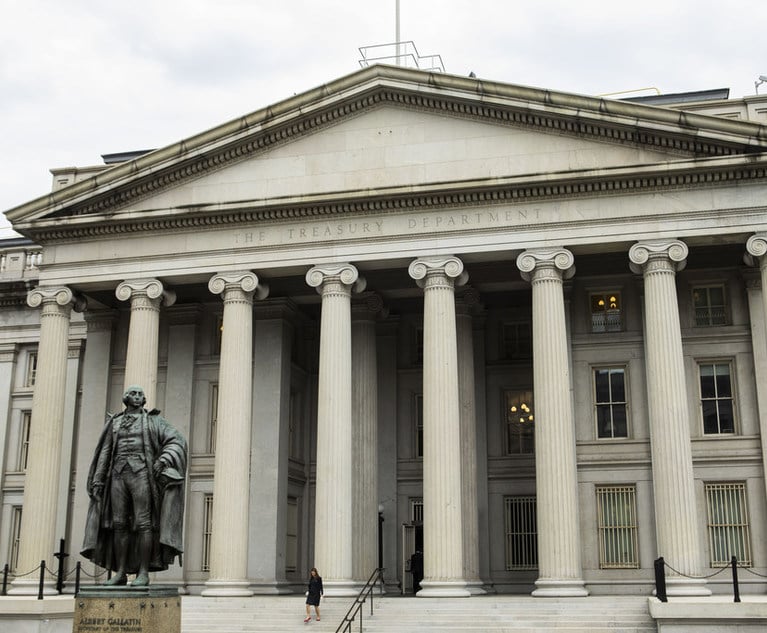 Chief Justice John Roberts Jr. Photo: Diego M. Radzinschi/NLJ
Chief Justice John Roberts Jr. Photo: Diego M. Radzinschi/NLJ In a Term Likely Defined by Race, Will John Roberts Oppose 'Jolts' to the Legal System?
The justices this fall will revisit the role of race in cases involving redrawing congressional districts, and in college admissions.
September 16, 2022 at 06:20 PM
7 minute read
The original version of this story was published on National Law Journal
What You Need to Know
- The new Supreme Court term will examine race in two areas--voting rights and affirmative action--with potentially major changes in the law.
- Chief Justice Roberts long has held a very restrictive view of the use of race in those two areas.
- In last term's abortion decision, he warned against serious jolts to the legal system. Will he act similarly in the race-related cases?
At the end of his recent appearance at the Tenth Circuit judicial conference, Chief Justice John Roberts Jr. received a print of a mural hanging in the Kansas Statehouse honoring the landmark Brown v. Board of Education decision. For civil rights groups familiar with Roberts' view of Brown, the gift may have held a certain irony mixed with anxiety about the new term's race-related cases.
If last term was defined by abortion, the new term will be all about race. That puts Roberts in a familiar position. Will he try to ameliorate more "jolts to the legal system" as he unsuccessfully attempted in the overruling of Roe v. Wade? Or, will he stand firm in his belief, expressed more than a decade ago, that "the way to stop discrimination on the basis of race is to stop discriminating on the basis of race" even for positive purposes?
The justices this fall will revisit the role of race in an Alabama redistricting challenge brought under the Voting Rights Act, often called the "crown jewel" of the civil rights movement, and also in the admissions policies of public and private universities.
At stake in the Alabama cases, Merrill v. Milligan and Merrill v. Caster, is the future of Section 2 of the Voting Rights Act, now the most viable tool for tackling racial discrimination in voting after the Supreme Court struck down the act's Section 4 and nullified Section 5 in Shelby County, Alabama v. Holder. That 5-4 opinion in 2013 was written by Roberts.
At stake in the admissions cases, Students for Fair Admissions v. Harvard and Students for Fair Admissions v. University of North Carolina, is the fate of the justices' nearly 20-year-old precedent permitting the consideration of race as a factor in achieving student body diversity in higher education.
Although Roberts has acted at times to moderate the court's extreme swings to left or right in certain controversial areas of the law, he is no swing vote, and race has not been an area where he has been likely to compromise.
No fan of the VRA
The chief justice has not been a fan of the Voting Rights Act since his time as a young lawyer in the Reagan administration. He lobbied hard inside the administration and in Congress for a narrow reading of Section 2, a reading Congress rejected.
In his first term as chief justice, Roberts dissented in a complicated congressional redistricting case from Texas involving discrimination against Latino voters. Justice Anthony Kennedy wrote the majority opinion, saying that changes to one particular district had undermined the progress of a racial group that had suffered significant voting discrimination. Roberts countered:
"I do not believe it is our role to make judgments about which mixes of minority voters should count for purposes of forming a majority in an electoral district, in the face of factual findings that the district is an effective majority-minority district. It is a sordid business this divvying us up by race."
Roberts' most significant race-related opinion came in the Shelby County voting rights case. The county challenged the law's requirement that jurisdictions with histories of voting discrimination get voting changes "precleared" by a federal court or the U.S. Justice Department.
Roberts' 5-4 majority opinion striking down Section 4 said America had changed but Congress had failed to reflect those changes in its preclearance formula for which jurisdictions should be covered.
On Oct. 4, the Voting Rights Act will again take center stage in arguments in the consolidated Alabama cases. The justices will decide whether Alabama's 2021 redistricting plan for its seven seats in the U.S. House of Representatives violates Section 2. A three-judge federal court unanimously said it likely did because the votes of Black citizens had been diluted in the newly drawn districts. In January, the court issued an injunction against using the 2021 map in the 2022 elections. The court also directed the state Legislature to redraw the map.
The underlying question in the two cases is whether a second majority-minority congressional district (out of the seven total districts in Alabama) is required by the Voting Rights Act and not prohibited by the equal protection clause.
Alabama Clue?
An inkling of what the justices may do came in February when, acting on Alabama's emergency request for stays, a 5-4 majority granted the stays and decided to review the merits of the challenge.
Surprisingly, Roberts, along with Justices Stephen Breyer, Sonia Sotomayor and Elena Kagan, dissented from granting stays. Roberts, in a separate dissent, explained, "the District Court properly applied existing law in an extensive opinion with no apparent errors for our correction."
But Roberts did agree that the court should decide the merits of the vote-dilution challenge and he offered a hint of his thinking on that issue. He noted that the court's decisions regarding the nature of vote-dilution claims "have engendered considerable disagreement and uncertainty."
Kagan, writing for herself, Breyer and Sotomayor, accused the majority of using its "shadow docket" to "signal or make changes in the law, without anything approaching full briefing and argument."
Evidence of the high stakes in the cases can be seen in the 37 amicus briefs filed by members of Congress, civil rights organizations, historians, states, social scientists, conservative and liberal election reform groups and others.
Brown Redux
Roberts has taken a similarly hard view of what he and other conservatives call "racial balancing" in schools. In the Roberts court's second term, the justices took up two cases challenging efforts by Louisville, Kentucky, and Seattle, Washington, to maintain integrated schools. The meaning of Brown v. Board of Education was very much in play in both cases.
During his 2005 Senate Judiciary Committee confirmation hearing, Roberts said that the historic school desegregation case was correctly decided. But in his 2007 plurality opinion invalidating the efforts by Louisville and Seattle, Roberts, using argument transcripts from Brown, claimed that even the lawyers who argued for school desegregation contended that race can never be used as a factor in the seating of schoolchildren.
Paraphrasing a comment by a Ninth Circuit judge earlier in the Seattle case, Roberts wrote: "The way to stop discrimination on the basis of race is stop discriminating on the basis of race."
Roberts' view reflected his conservative colleagues' view that the Constitution is "color blind." Justice Anthony Kennedy, who wrote a narrower, concurring opinion, called a color-blind Constitution "aspirational." He stated that diversity is a "compelling educational goal a school district may pursue." Dissenting Justice John Paul Stevens wrote that Roberts "rewrites the history of one of this court's most important decisions."
After the Roberts opinion came out, surviving lawyers from Brown sharply denounced the chief justice's opinion and interpretation of Brown. They called it "preposterous," "dirty pool," and "100% wrong."
The Harvard and University of North Carolina cases will be argued on Oct. 31.
Roberts' view of Brown and the role of race under the Constitution is the likely source of any cynicism by civil rights groups over the recent Tenth Circuit gift to the chief justice. It also is the source of their concern about what he and the court's conservative majority will do in the voting rights and affirmative action cases.
Although no longer needed by his five conservative colleagues to form a majority, Roberts is still considered an "influencer" and a justice to watch, particularly in a fraught time for the Supreme Court.
NOT FOR REPRINT
© 2025 ALM Global, LLC, All Rights Reserved. Request academic re-use from www.copyright.com. All other uses, submit a request to [email protected]. For more information visit Asset & Logo Licensing.
You Might Like
View All
Trump Seeks Pause of Supreme Court Cases, Disavows DOJ Stance on Voting Rights Act

Poop-Themed Dog Toy OK as Parody, but Still Tarnished Jack Daniel’s Brand, Court Says
4 minute read
Supreme Court Reinstates Corporate Disclosure Law Pending Challenge

Justices Grill US Government in Venue Dispute Over FDA Vape Challenges
Trending Stories
Who Got The Work
J. Brugh Lower of Gibbons has entered an appearance for industrial equipment supplier Devco Corporation in a pending trademark infringement lawsuit. The suit, accusing the defendant of selling knock-off Graco products, was filed Dec. 18 in New Jersey District Court by Rivkin Radler on behalf of Graco Inc. and Graco Minnesota. The case, assigned to U.S. District Judge Zahid N. Quraishi, is 3:24-cv-11294, Graco Inc. et al v. Devco Corporation.
Who Got The Work
Rebecca Maller-Stein and Kent A. Yalowitz of Arnold & Porter Kaye Scholer have entered their appearances for Hanaco Venture Capital and its executives, Lior Prosor and David Frankel, in a pending securities lawsuit. The action, filed on Dec. 24 in New York Southern District Court by Zell, Aron & Co. on behalf of Goldeneye Advisors, accuses the defendants of negligently and fraudulently managing the plaintiff's $1 million investment. The case, assigned to U.S. District Judge Vernon S. Broderick, is 1:24-cv-09918, Goldeneye Advisors, LLC v. Hanaco Venture Capital, Ltd. et al.
Who Got The Work
Attorneys from A&O Shearman has stepped in as defense counsel for Toronto-Dominion Bank and other defendants in a pending securities class action. The suit, filed Dec. 11 in New York Southern District Court by Bleichmar Fonti & Auld, accuses the defendants of concealing the bank's 'pervasive' deficiencies in regards to its compliance with the Bank Secrecy Act and the quality of its anti-money laundering controls. The case, assigned to U.S. District Judge Arun Subramanian, is 1:24-cv-09445, Gonzalez v. The Toronto-Dominion Bank et al.
Who Got The Work
Crown Castle International, a Pennsylvania company providing shared communications infrastructure, has turned to Luke D. Wolf of Gordon Rees Scully Mansukhani to fend off a pending breach-of-contract lawsuit. The court action, filed Nov. 25 in Michigan Eastern District Court by Hooper Hathaway PC on behalf of The Town Residences LLC, accuses Crown Castle of failing to transfer approximately $30,000 in utility payments from T-Mobile in breach of a roof-top lease and assignment agreement. The case, assigned to U.S. District Judge Susan K. Declercq, is 2:24-cv-13131, The Town Residences LLC v. T-Mobile US, Inc. et al.
Who Got The Work
Wilfred P. Coronato and Daniel M. Schwartz of McCarter & English have stepped in as defense counsel to Electrolux Home Products Inc. in a pending product liability lawsuit. The court action, filed Nov. 26 in New York Eastern District Court by Poulos Lopiccolo PC and Nagel Rice LLP on behalf of David Stern, alleges that the defendant's refrigerators’ drawers and shelving repeatedly break and fall apart within months after purchase. The case, assigned to U.S. District Judge Joan M. Azrack, is 2:24-cv-08204, Stern v. Electrolux Home Products, Inc.
Featured Firms
Law Offices of Gary Martin Hays & Associates, P.C.
(470) 294-1674
Law Offices of Mark E. Salomone
(857) 444-6468
Smith & Hassler
(713) 739-1250








